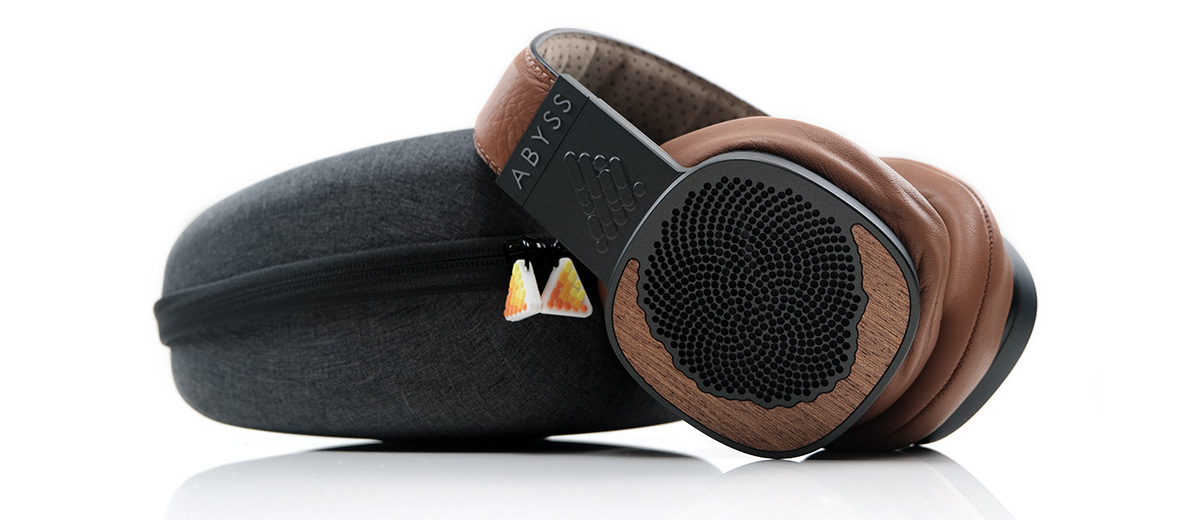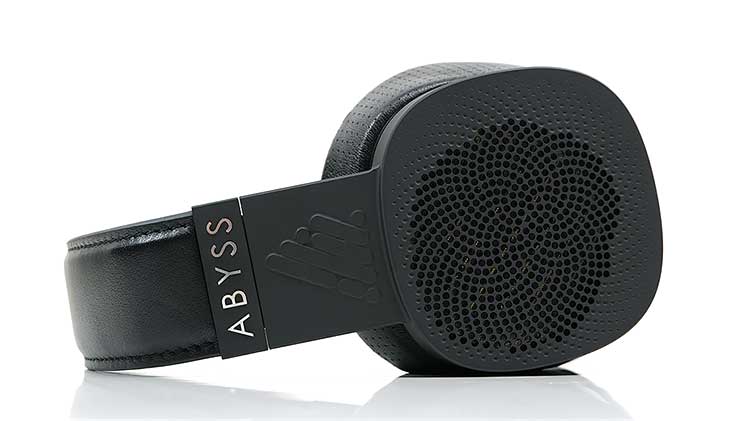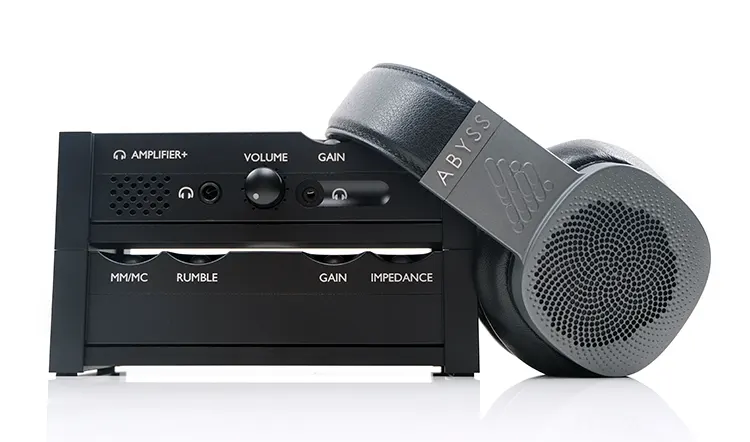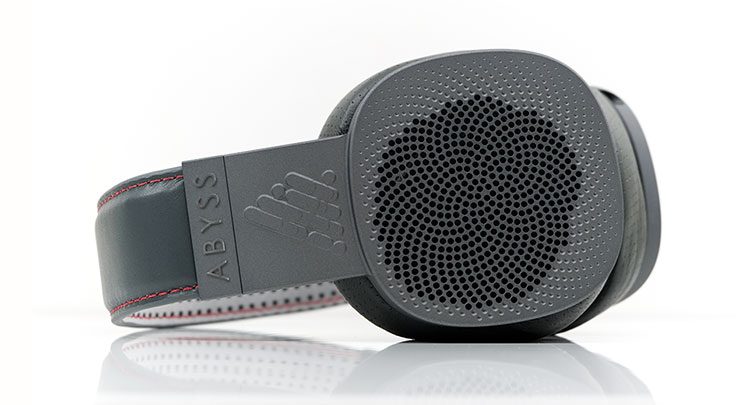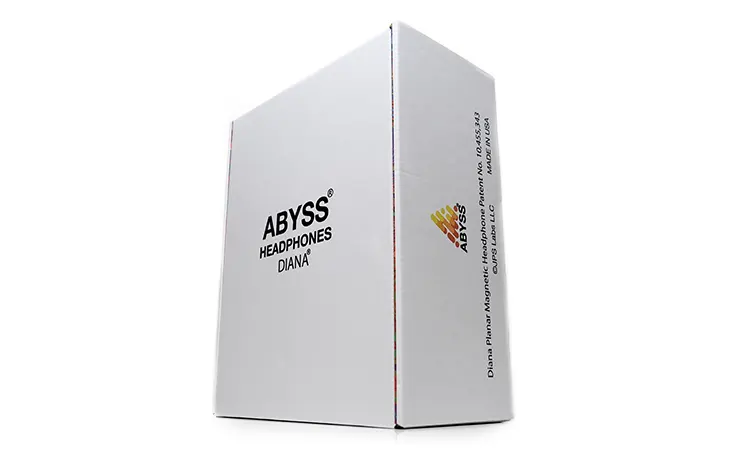Selected Comparisons
The following comparisons to the DIANA MR were completed using a mix of the dCS Lina Network DAC and Lina Headphone Amplifier as well as the XI Audio Formula S with the Shanling EC Mini CDP.
ABYSS DIANA V2
The ABYSS DIANA V2 was launched in 2020 and represented the 2nd generation of the original 63mm DIANA driver design. We reviewed it in the same year and also awarded it our 2020 Top Gear Award for Best headphones.
Technical
Both headphones use an evolved design of the 63mm patented planar magnetic driver that shipped with the original DIANA. This driver is not quite as low mass as the Phi and TC versions and it also has a slightly thicker diaphragm.
As far as I am aware the DIANA V2 driver versions’ evolutionary step from the original involved tweaking the trace pattern to the magnetic field to improve its resolution.
From what I have been told and read, there was more metallization work done on the DIANA MR trace to further lower the resistance of the driver from the V2’s 42Ω down to 30Ω.
A quick peek on the inside of their cups reveals a different material color with the V2 using what seems to be a more resistant gold and the DIANA MR’s silvery tone indicating a likely aluminum material.
Both of these headphones have a 91 dB/mW SPL rating so the sensitivity levels are the same. The focus is really on the load and how it responds to amps with a lower voltage rating.
Design
The form factor for these two DIANA variants is the same. The main changes are related to the finishing in terms of color and material choices and probably more importantly, the earpads which have had a significant up for the DIANA MR.
Not that the update to the pads suddenly happened with the MR edition, but rather it’s more of an evolutionary timeline between the V2 to the MR and including the TC model.
Once you compare the older perforated pads with the new it’s pretty obvious that the DIANA MR non-perforated lambskin or Vegan UltraSuede pads are deeper, softer, and comfier with that flatter surface at the edge of the flute design.
Combine that with the slightly better padding on the underside of the headband and yes, the MR version is the comfier of the two headphones to wear.
Of course, existing DIANA V2 owners can upgrade both the headband and the pads, and in doing so, the gap is effectively closed but it will cost north of $250 to do that.
The aesthetics are a preference thing. I thought the black for the DIANA V2 was an attractive finish but my preference is for the earth tones of the MR. You may prefer the lower profile of the V2 visual.
Both headphones still use the 1.5m stock JPS Labs cable with the unique 2.5mm connectors and a choice of plugs or cable lengths depending on your budget.
Performance
To use an analogy to best describe the differences between these two tonally, then, it would be a bit like playing a guitar strung with catgut and then switching to the same guitar but strung with a softer D’addarios nylon.
For the non-guitarists among you, a lot of catgut string work is considered to be sweeter or slightly brighter than softer nylon strings from the likes of D’addarios which have more sustain and warmth with a longer decay.
And that is what you get here with the V2 sounding generally quite smooth but slightly thinner, slightly leaner, and not as weighted as the richer, juicier sound of the DIANA MR.
When listening to actual Spanish guitar plucks the above abstract translates into an accurate tangible. I must say I do like the short and clean quality of the V2 on the string coloration but the DIANA MR presentation does give it a more natural hue with more body.
And that is the key driver between these two, that low-end fundamental. The DIANA MR bass is more linear right up to 3k with less of a dip in the lower mids and a more even-sounding upper-midrange tuning.
Both vocal presentations are quite forward but the V2’s sound more detached with instrumental presence slipping a bit behind. Not so with the DIANA MR’s more immersive presentation which fleshes out those instruments in a meatier manner and improves on the perceived PRaT substantially.
Neither has overly aggressive treble so changes are more noticeable on the lows and mids compared to the highs which remain the smoothest of the entire DIANA range.
ABYSS DIANA TC
The ABYSS DIANA TC is the company’s previous release of the DIANA line and unofficially sits above the DIANA MR in the series with a higher price point. You can read our full review of the DIANA TC here.
Technical
Similar to the V2 comparison, the TC version also has a 63mm planar magnetic driver. However, the TC design is a trickle-down of the AB-1266 TC rather than a tweak of the original DIANA driver.
The key difference is this version has an ultra-low mass and thinner diaphragm compared to the DIANA MR driver setup. That translates primarily to a perceived improvement in the ‘speed’ of the driver’s performance.
Abyss does not dive too much into detail on paper regarding the precise nature of the Phi to TC tweaks other than it has an improved trace design and a larger active surface area on the diaphragm.
The TC is also less efficient compared to the DIANA MR with a rating of 69Ω compared to 30Ω but just slightly less sensitive at 90 dB/mW SPL as opposed to 91 dB. The DIANA MR should benefit more from portable source pairings compared to the TC which will be more at home with a desktop rig.
Design
Most of the noticeable improvements from the V2 to the DIANA MR are also present in the TC.
The one difference I did find though between the two samples I have here is the pad depth and softness of the internal foam which I find to be superior to the pads that come with the DIANA TC.
However, I do believe these latest generation of pads now come with the TC so this is more of an observation on the continual pad development by ABYSS. I include the new Vegan pads also in that statement as they are an option now for TC buyers.
With the TC and DIANA MR equipped with the same pads, weighing the same at 390g, and sporting the new slightly improved headband the comfort experience is identical.
If you need some additional scalp comfort for your head you can refer to page 1 of this review because the options are the same also for the additional stick-on padding accessory.
Both headphones also use the same 1.5m JPS Labs cables with matching connector sockets to the rear of the cups and varying length and termination options when buying online.
The more obvious physical differences are the materials and external aesthetics, especially the DIANA MR Sapele wood design and tanned leather pads which stand out a mile from the lower-profile Titanium and black Alcantara of the TC. The TC’s bronze edition does come closer though to the MR’s retro vibe.
Performance
The DIANA TC is more reference-like and neutral sounding with a higher level of perceived resolution and staging height when compared to the DIANA MR.
You get a lot more information from tracks thrown back at you, especially on the peripherals where even the subtlest of notes are quickly picked up on the TC.
The DIANA MR is the weightier and warmer sounding of the two headphones. It is not as articulate and you can quickly pick up on the reduced spatial detail compared to the TC. However, it’s more forgiving, and smoother sounding with a richer set of mids and instrumental timbre.
The DIANA MR is probably going to be the general crowd-pleaser but the purists will gravitate to the TC just for the superior level of instrumental separation and the tighter, faster presentation.
The TC resonates a bit brighter in the upper mids compared to the DIANA MR so it can be less forgiving. However, there is a high degree of transparency and a lot of it comes down to the right amp and source matching. Get that right and the TC is probably the most pure-toned edition of the Diana series.
Staying on amps and sources, I tried both from the balanced output of a Cayin RU7 dongle just to get a measure of how well the DIANA MR lived up to its easy-to-drive tag compared to the TC.
Both do require a lot of volume, even in high gain, pushing the RU7 almost to the max but once I got the required volume-matched levels the DIANA MR sounded the more dynamic and livelier of the two headphones.
The TC still has that neutral clear tone but the dynamics were a bit lifeless with the holographic staging from the Formula S pairing largely gone.
ABYSS DIANA Phi
The DIANA Phi was the precursor to the TC version. It was launched and reviewed by us in 2019 it was also a Co-Awardee for our Top Gear Award for Best Headphones for that same year.
Technical
The DIANA Phi is consistent with the MR in using a 63mm planar magnetic driver size. However, it was the first of the DIANA series to have its driver technology drawn from the flagship AB-1266.
Unlike the TC, though, it’s the Phi CC driver rather than the new Phi TC driver though both are ultra low-mass and still considered by ABYSS as a bit of a step up from the original DIANA driver which is what the MR has evolved from.
What might pique your interest is the load rating of the Phi which is 32Ω and not that far off the DIANA MR’s impedance of 30Ω. Its sensitivity measurement is also an exact match at 91dB/mW meaning both should be suited to similar desktop and portable equipment.
Design
Since this is a very early generation DIANA, you can clearly see the improvements ABYSS has made going from the Phi to the MR.
Again, we start with the pads with this sample using one of the first fluted designs on offer. That means a thin contact edge on the outer lip and relatively stiff foam with a shorter inner wall.
The DIANA MR’s newer pads are by far the comfier. Its flatter, wider contact surface and softer foam improve the comfort levels for long listening sessions as well as the taler inner wall mitigating some of the clamping pressure.
Now, the cool thing is that with the pad dimensions on all of the DIAN headphones being the same I can detach the older, less comfy Phi pads and slip on the Vegan UltraSuede or the new lambskin pads that come with the DIANA MR and immediately improve the comfort levels.
But it is still not quite the same because the older Phi headband lacks the little additional memory foam bumps from the DIANA MR headband. It will generate a scalp hotspot at a more rapid rate than the MR so I would advise grabbing the headband stick-on mod from the ABYSS store to complete the experience.
Back then, the aesthetics of the Phi were not as varied as the four options with the DIANA MR. It’s still a looker IMHO with that ceramic finish in Titanium grey and the light red stitching on the top and underside of the headband.
The cables on these two headphones are unchanged since 2019, both in terms of plugs and cable length as well as the 2.5mm connector pins.
Performance
The surprising first impression is how close the Phi comes to the DIANA MR when running from the balanced output of a quality dongle such as the Cayin RU7.
With that Phi CC driver and knowing it sounds amazing with a quality amp, I expected it to sound similar to the TC with a flatter less holographic presentation despite having similar ratings to the DIANA MR.
That did not happen with both equally as loud and both showing off pretty decent dynamic range and staging depth.
Tuning-wise, the Phi is between a rock and a hard place with the TC sounding a lot roomier and more holographic and the DIANA MR the more planted and richer sounding.
On the plus side, it’s also a middle-path performance with just enough warmth and sweetness to it that I find very appealing with the Formula S compared to the more reference tuning of the TC. It also delivers more control and superior separation compared to the MR.
You will find some vocal imaging more intimate on the Phi than the MR. It has a more pronounced 1-2k bump that can leap out at you whereas the MR is more pronounced around 3k, an area that the Phi has less energy.
One thing to note, the 6-7k peak on the Phi gives the timbre a little more shine and brightness compared to the MR whose bump from 6-8k is not as pronounced.
The MR will sound the darker of the two but on the flipside, it delivers a more even-harmonic and richer tonal quality through the mids. The MR low-end also sounds more robust and voluptuous but the Phi does better in terms of punchiness, speed, and control.
Our Verdict
The ABYSS DIANA MR is the company’s most accessible set of high-end headphones to date. It delivers a beautifully smooth and refreshingly beefy tuning compared to what I have heard before from any set of DIANA headphones.
It is tailor-made for modern pop and rock genres with that richer and denser low-end but it also sounds very natural and easy on the ear with classic vocal performers.
It also looks ‘the business’ in that Sapele wood edition with the tanned leather pads. You can opt for the Vegan UltraSueude pads, which are more comfortable for sure but might be too mellow for my tastes.
I am glad to see ABYSS take some steps to accommodate head comfort with the additional headband stick-on pads, they do make a difference for longer listening sessions.
The TC is still the top dog for me resolution-wise, but the MR brings a lot of ‘fun’ and enjoyment to the table without having to hook it up to a powerful system. Combined with its diminutive size it might just well be one of the best-performing high-end headphones to date that is a worthy insert into your travel bag.
ABYSS DIANA MR Specifications
- Impedance 30Ω
- Sensitivity 91 dB/mw @1kHz
- Frequency response 10 Hz – 30 KHz
- Weight 390g
- Cable by JPS Labs, length 1.5 meter/5 FT, with choice of 4 pin XLR or 4.4 mm balanced plug

